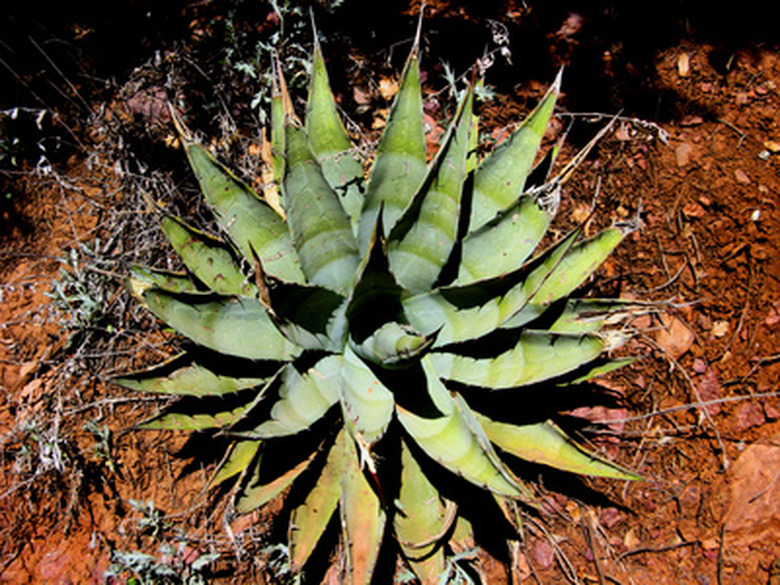Agave Cactus Dangers
There are more than 10 different species of agave cactus that grow in the desert of the American Southwest. Classified as a succulent, agave cactus have hard, sword-shaped leaves that grow in a rosette pattern. Some species may or may not have stems. Depending on the species of agave, parts of the plant are dangerous and should be avoided.
Cuts and Abrasions
Agave cactus leaves are toothed along the edges and have needle-like points at the ends. These sharp points can jab and stick in clothing and skin on humans and in fur on pets. Take care when transplanting and wear thick, heavy gloves to protect your hands, or wrap a loop of folded paper around the plant when handling it, recommends The American Horticultural Society in the "Encyclopedia of Gardening." Ensure the plants are away from walkways and garden paths, places where people can brush up against them. In the wild, do not touch the plant with bare skin as the needles can pierce the skin.
- There are more than 10 different species of agave cactus that grow in the desert of the American Southwest.
- In the wild, do not touch the plant with bare skin as the needles can pierce the skin.
Skin Irritations
The sap from agave Americana, known as a century plant because it takes more than 10 years to bloom, has been found to cause contact dermatitis, which results in red, itchy rashes and the appearance of blisters. The juice from the plant contains oxalic acid crystals, which a known irritant that, if ingested in large doses, may cause a sore throat and convulsions, according to the PAN Pesticides Database.
Poison
The juice from the agave lechuguilla plant contains saponin, which is poisonous to sheep, cattle and goats, according to the United States Department of Agriculture, and causes what is known as goat fever. Goats and sheep eat the plant more often than cattle and are poisoned more often. Cattle steer clear of the plant unless there is a food shortage or a drought. In humans, saponin is used as an expectorant in cough medicines.
References
- "The Encyclopedia of Gardening;" The American Horticultural Society; 1993
- United States Department of Agriculture: Agave Lechuguilla
